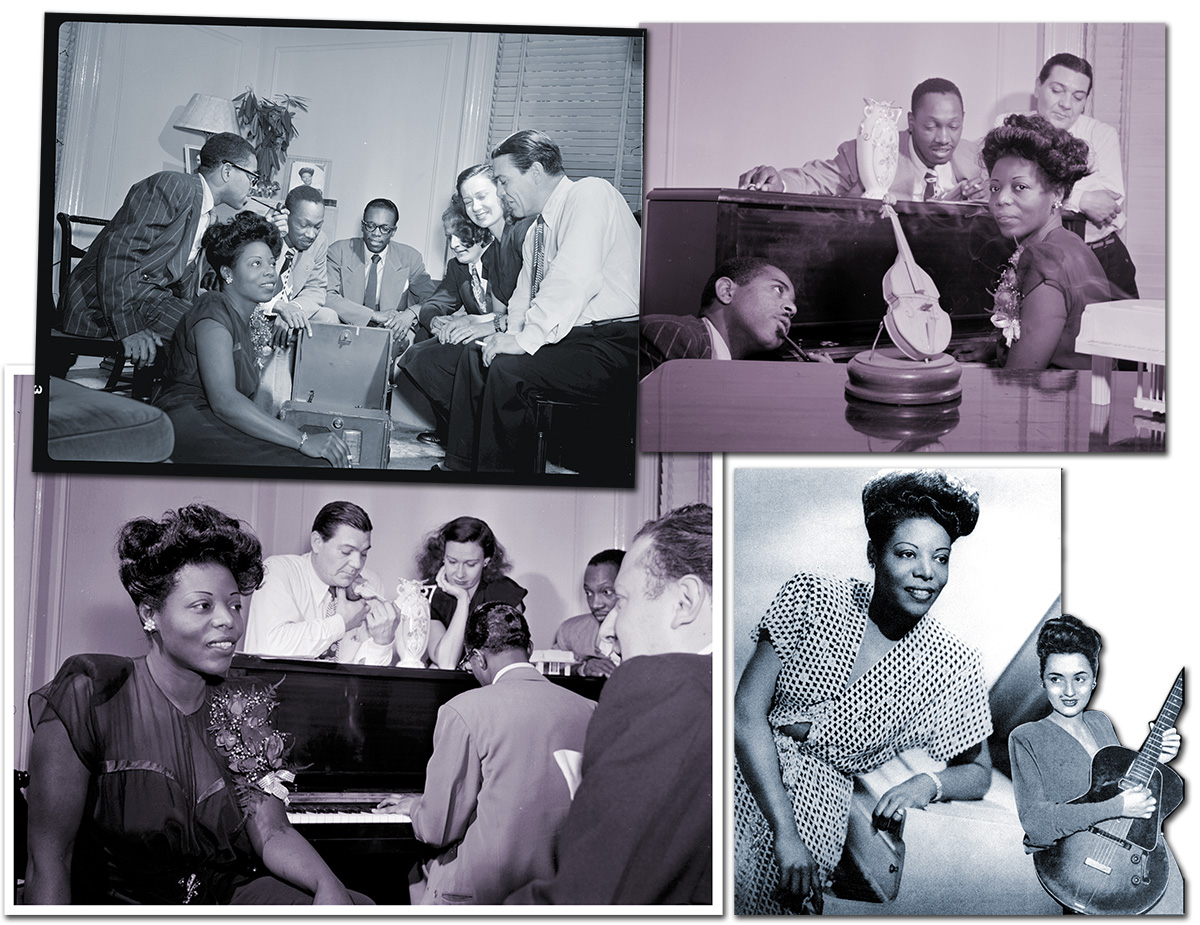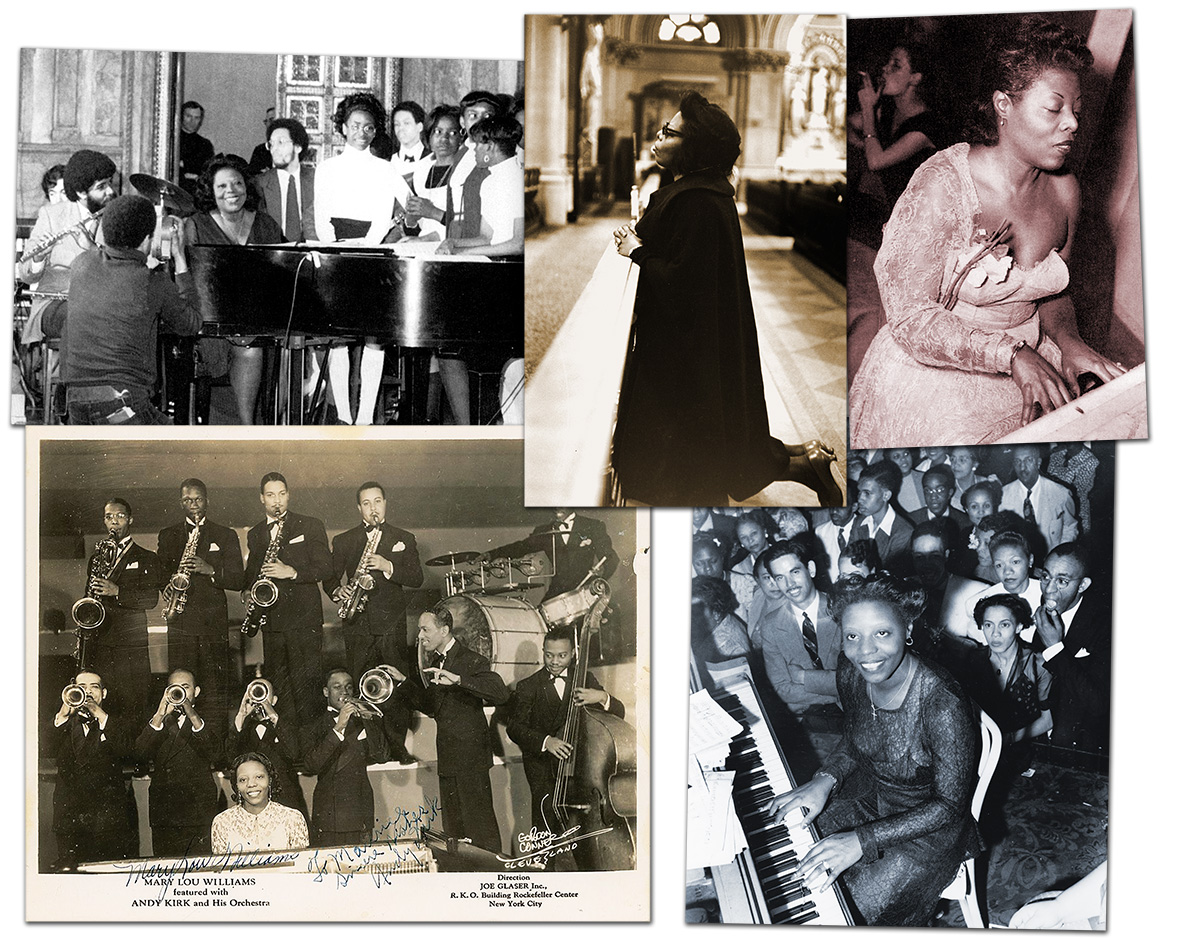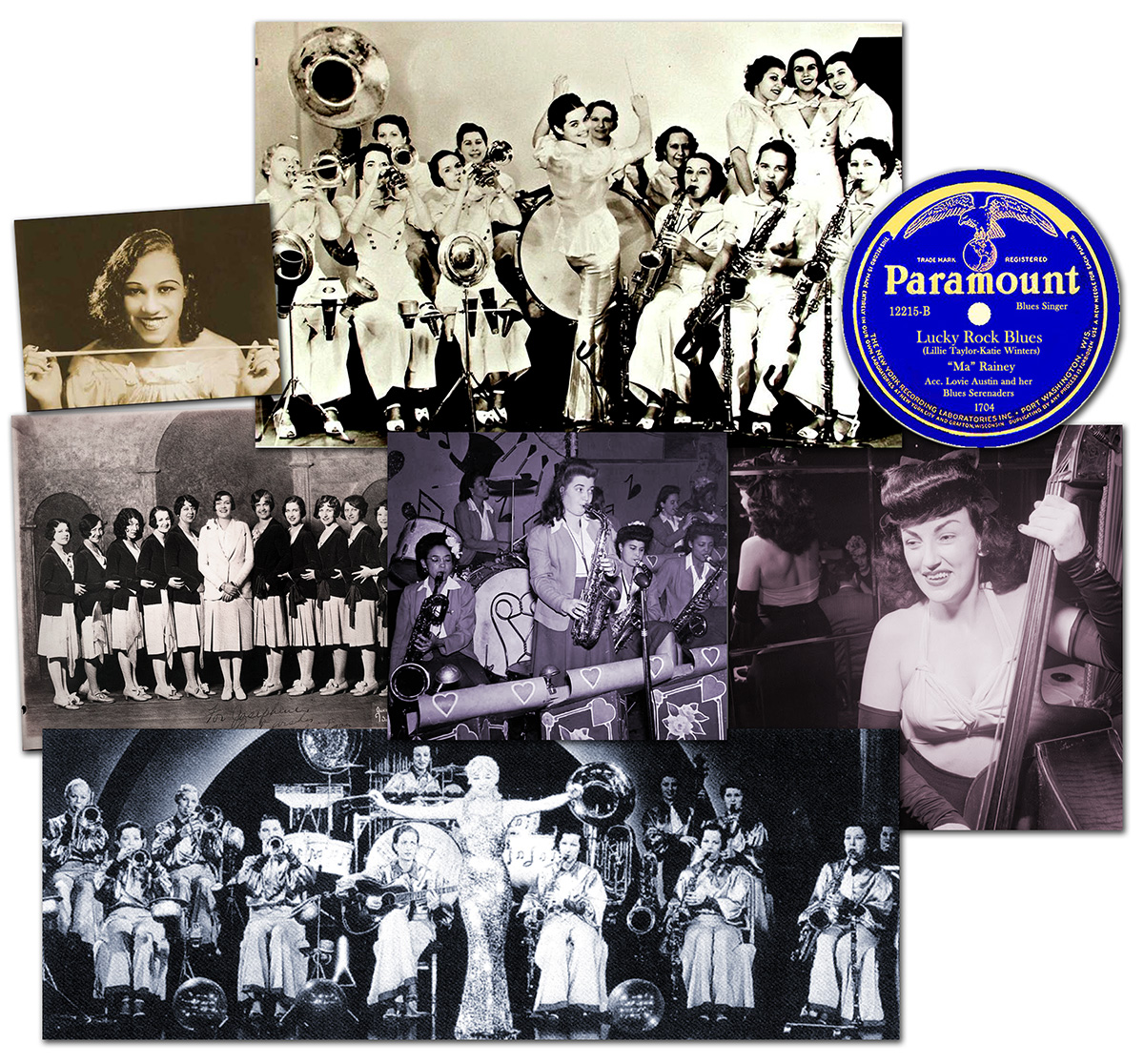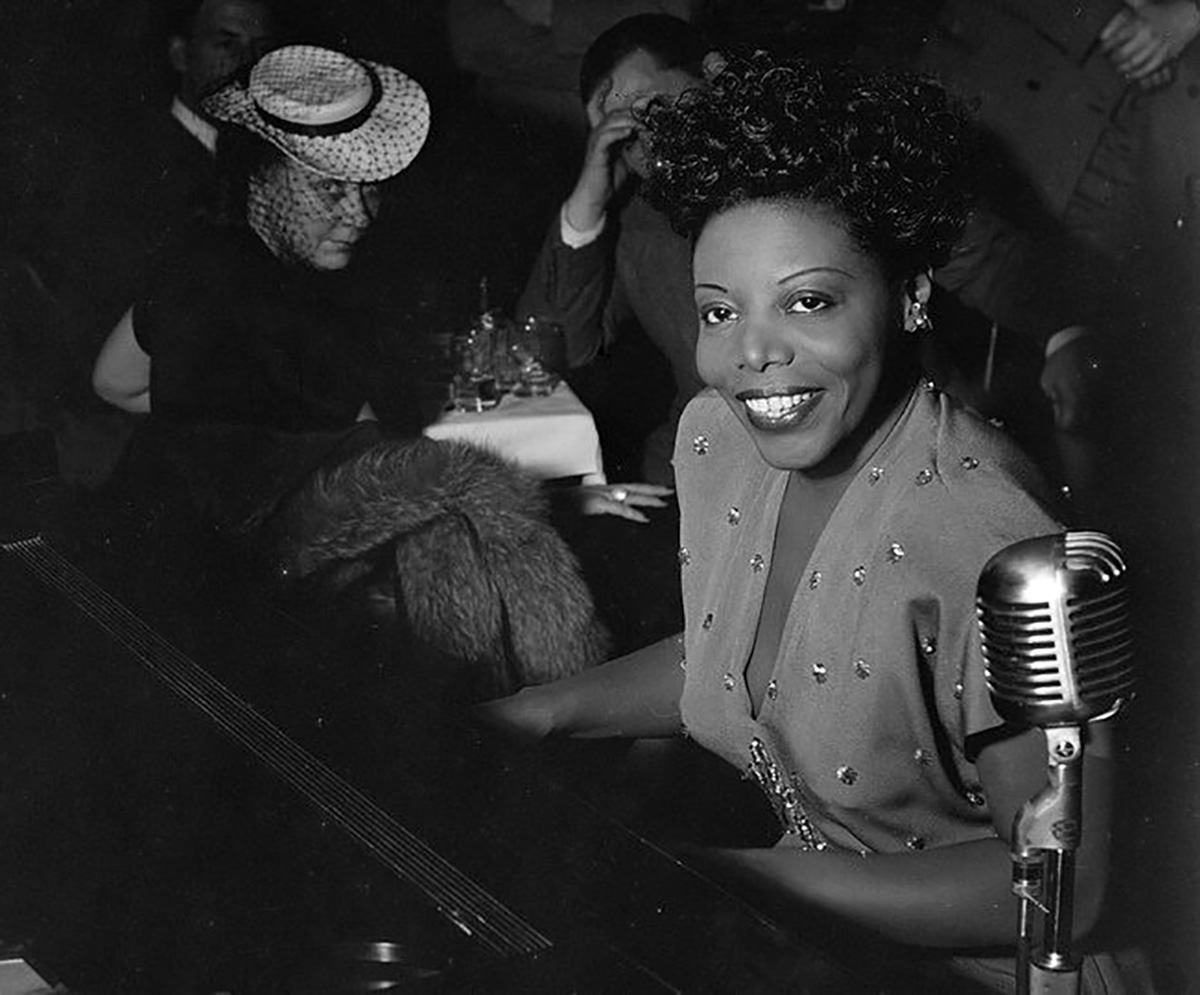Mary Lou Williams
Mary Lou Williams (Mary Elfrieda Scruggs, 1910-1981) was some kind of musical genius who did it all. She was an exceptionally talented and productive arranger, piano player, composer and bandleader. One of the most potent talents of Jazz, she was a terrific pianist, arranger of major stature and a gifted composer. Her piano style and writing developed in parallel with Jazz itself through Ragtime, Stride, Swing and Boogie to Bop, Modern and beyond.
Playing professionally from the age of fifteen, Mary Lou joined the band of saxophonist John “Bearcat” Williams whom she married in 1926. Their group was nucleus for the popular Andy Kirk orchestra touring and broadcasting out of Kansas City in the broad Midwestern dance band territory. Her distinctive arranging, skilled musical direction and dazzling keyboard artistry were major factors in the successful dozen-year run of Andy Kirk and the Twelve Clouds of Joy.
Williams’ first piano solo recording was an original and striking stride masterpiece. The Earl Hines-inspired “Night Life” announced the debut of a major jazz talent. Leonard Feather produced her 1946 Girl Stars session and wrote “Blues at Mary Lou’s” for a quartet with vibraphonist Margie Hyams, amplified guitar player Mary Osborne and drummer Bridget O’Flynn.
Night Life – solo (1930).mp3
Blues at Mary Lou’s – Girl Stars (1945).mp3
In the 1930s and ‘40s Williams wrote arrangements for the stellar Swing bands of Benny Goodman, Earl Hines, Tommy Dorsey and Duke Ellington. In the mid-1940s she progressed decisively into Modern jazz, becoming a bold avant-garde revolutionary. Her New York City apartment was a gathering place for a vanguard of emerging Be-Bop progressives like Thelonious Monk, Bud Powell and Charlie Parker.
Visionary innovations poured forth. She wrote tunes and arrangements for the orchestras of budding modernists, Dizzy Gillespie, and her own ensembles. “Taurus Mood” is from her inventive“Zodiac Suite” which was performed at Carnegie Hall in 1946 by the New York Philharmonic Orchestra. She wrote and directed “Lonely Moments” for a 10-piece orchestra.
Taurus Mood – solo (1944).mp3
Lonely Moments – orchestra(1947).mp3

Seen at Williams’ New York city apartment in 1947 are Dizzy Gillespie, Tadd Dameron, Hank Jones, Jack Teagarden and others. Guitarist Mary Osborne made several recordings with Mary Lou. Most of these photos are by William P. Gottlieb.
After retiring from music for a few years in the mid-1950s and converting to Catholicism,Williams resumed composing, arranging and performing, writing large-scale sacred works, three masses and a cantata. “Music for Peace” (aka Mary Lou’s Mass) was choreographed and performed by the Alvin Ailey Dance Theater. Her forward-leaning “Black Christ of the Andes” (Smithsonian Folkways CD 40816) was groundbreaking, though misunderstood and even disparaged at the time.
Anima Christi (1964).mp3
Praise the Lord (1964).mp3

Mary Lou teaching in the 1960s; praying in 1964; playing Paris in 1954 and very much in the driver’s seat of the fine Andy Kirk Orchestra. Some images are from the 1999 Linda Dahl biography of Mary Lou, Morning Glory.
In the 1970s, Mary Lou performed at colleges, formed her own record label and music publishing company, founded the Pittsburgh Jazz Festival and did some radio and television work. Receiving numerous honorary degrees, she taught master classes at Duke University. In 1978, she performed at Carnegie Hall in Benny Goodman’s 40th anniversary concert and at the White House for President Jimmy Carter.
During Williams’ last decade her final recordings summed up and retraced a career that had progressed through the history of jazz piano– Ragtime, Blues, Stride, Boogie, Swing and Bop. As Mary Lou put it, “I did it, didn’t I? Through muck and mud.”

Dynamic women. L to R, top row: Blanche Calloway, Rita Rae and her Orchestra. Middle row: Babe Egan and her Hollywood Red Heads (1924), International Sweethearts of Rhythm, Vivien Garry. Bottom: Ina Rae Hutton and the Melodears.
Gifts of the Muses
Stories of the women who shaped early Jazz, Classic Blues and Popular music demonstrate that the creative muses granted creativity, drive and enterprise to both genders. This is merely an introduction and not a comprehensive survey of the many talented, wonderful women who expressed and supported themselves in music.
A select vanguard of determined, gifted and charismatic female musicians succeeded artistically and financially despite resistance, skepticism, hostility and ridicule from their critics and male peers. These dynamic women proved themselves equal to men in all aspects, while looking fabulous and doing it all “backwards and in high heels.”
Discover more dynamic women of Jazz and Blues in the previously published, two-part Dagogo column, Divas, Jazz and Harlem on the Seine, 1924-39. https://www.dagogo.com/divas-jazz-harlem-seine-paris-1924-39-part-1-2
Sources and further exploration:
Lil Hardin’s out-of-print 1968 interview by Chris Albertson was issued on Riverside Records. A transcript is found at the website of the late Mr. Albertson.
Black Beauty, White Heat: A Pictorial History of Classic Jazz 1920-50, Frank Driggs and Harris Lewine (Da Capo Press 1995)
Jazz Records, 1897-1942 [discography], Brian Rust (Arlington House, 1978)
Morning Glory: A Biography of Mary Lou Williams, Linda Dahl (University of California Press, 1999)
Swing Shift: “All Girl” Bands of the 1940s, Sherrie Tucker (Duke University, 2000)
The New Grove Dictionary of Jazz (St. Martin’s Press, 1988)
- ← Previous page
- (Page 3 of 3)

